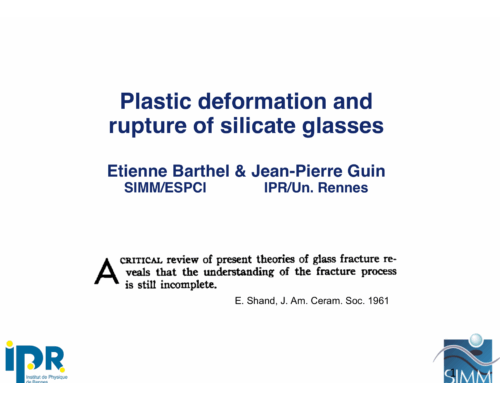Glass is an everyday material, which humanity has used since the Stone Ages and fabricated since well before the Common Era. Today its uses range from cookware in our kitchens to lenses in outer space and high-tech components. The wide use of glasses is due to numerous advantageous properties, including transparency, high stiffness and hardness, low thermal expansion, high melting point, relative inertness, etc., yet despite these numerous advantageous properties glass still has a major drawback: It is fragile. Industry has tackled this issue via several schemes: altering the chemical composition, invoking phase separation, layering glass, replacing Na+ ions by K+ ions, etc. This thematic day will look at current issues concerning the mechanical properties of glasses with special emphases on:
- Plasticity
- Fracture across time and length scales
- Micromechanics
- Issues concerning industrial applications (including microelectronics)
- Emerging issues (including 3D printing)
- …

Dynamic fracture of alkali silicate glasses: insights from large scale atomistic simulations – S. Ispas
2.48 MB

Predictive analytics enabling for high performance materials design – A. Berthereau
1.67 MB

Estimation du seuil de fissuration à l’aide de modèles à gradient d’endommagement : application aux matériaux vitrocéramiques sous auto-irradiation – G. Feugueur
7.06 MB
Institut de Physique du Globe de Paris
1 Rue Jussieu
75005 PARIS
1 Rue Jussieu
75005 PARIS



